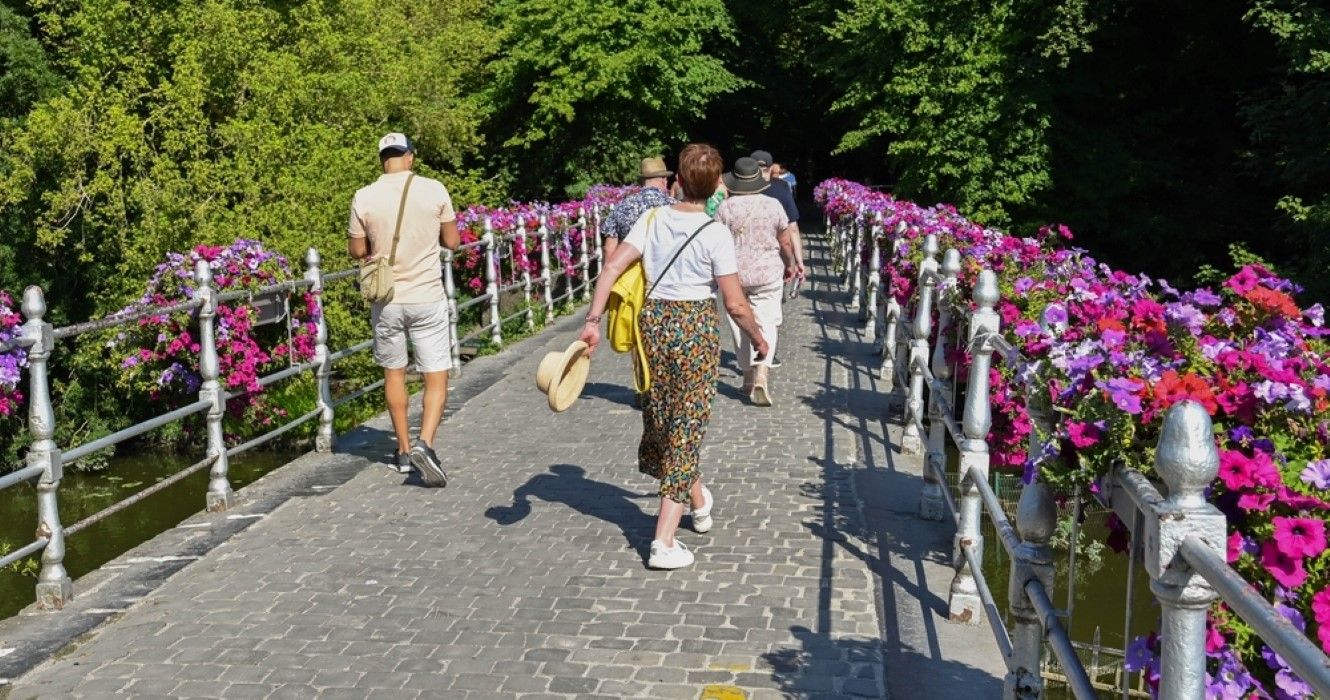Quick Links
Strolling around the Belgian city of Bruges is like stepping back into a different era, one that existed several centuries ago. Back in the day, meaning around the 13th century, Bruges was linked to the North Sea by the River Zwin, making it a busy international port. But when the river began to silt in, Bruges had to redefine itself as a land-based trading destination, and it did quite well, in fact, for a few hundred years.
Eventually, Antwerp, about 50 miles away, became the top dog for cloth trading and other industries of the time, and Bruges fell into decline. Belgian historians say that by the mid-1800s, Bruges was the poorest city in Belgium. But Bruges, now home to about 120,000 residents, was able to recast itself again, this time into a thriving tourist destination.
It's easy to walk across Bruges for several reasons: With tourism as the backbone of its economy, the city makes a visit as simple and engaging as possible, with excellent signage directing tourists to the historical sites, free guided walking tours offered and well-publicized by several local groups, and easy-to-read street maps available in virtually every shop and eatery.
And if a visitor takes a wrong turn, no worries. Bruges is a small city, and it's quite enjoyable to ramble through its cobblestone streets and alongside its intricate canal system and to cross any of the city's 80 picturesque bridges. In other words, it's hard to get lost in Bruges, often called the Venice of the North.
Take A Tour Of The Historic City Center in Bruges
In an effort to control crowds and protect its ancient architecture, Bruges doesn't allow motorcoaches into the city center, so there are no bus tours to hop onto. Vehicle parking is limited, with underground lots situated in certain parts of the city. And since virtually all of the main historical sites are located within about a two-mile radius, a walking tour is the way to go. Afterward, tourists can end their day with a refreshing canal boat ride.
For walking, Market Square is a good starting point. It has been the site of a weekly market since the 10th century and still holds a market on Wednesday mornings. It's a busy place, ringed by restaurants and shops, with people walking, riding bikes, and shopping. This is a good place to sample a traditional Belgian waffle. The notable building to see in the market square is the Belfry Tower, which is a medieval bell tower that sits atop what used to be the Cloth Hall, where Flemish traders used to buy and sell goods. Visitors can climb to the top of the Belfry Tower.
An entertaining stop before leaving Market Square is the Historium. Located in an old warehouse, the Historium offers a 15th-century audio-visual experience that takes visitors through several historical-themed rooms furnished in medieval fashion and enhanced with music and special effects.
St. Saviour’s Cathedral, the oldest parish church in Bruges, dates back to the 10th century and is a popular stop for tourists. It's a prime example of medieval architecture and houses several medieval tombs. Visitors can view a collection of Flemish paintings, some as old as the 14th century, along with some 18th-century tapestries.
Another religious site, the Church of Our Lady Bruges, has a 380-foot church tower that is the highest in Bruges. The building, with its 13th-century gothic architecture, and visitors can see what it's best known for – the sculpture “Madonna and Child,” a work by Michelangelo in 1504.
The 15th-century Bruges City Hall sports gothic architecture and is still in use as the seat of local government. A courthouse is connected to it, and visitors can tour inside both sections.
The Quay of the Rosary is said to be the most photographed scene in Bruges. It's located at the intersection of the Dijver and Groenerei canals, where the calm waters reflect perfectly preserved medieval buildings flanked by natural foliage and tall trees.
Old town walkers also will come upon some interesting restaurants and specialty food stores, particularly chocolatiers, since Bruges is famous for its chocolates. The Gruuthuse Hof is one of the city's oldest restaurants, in operation since 1751 and serving traditional Belgian favorites.
Take A Side Trip To Bruges' Lake Of Love
Visitors who've seen the landmark historical sites in the old city of Bruges can stroll a bit farther afield to see Minnewater, a spacious park located in the southern part of the city, about a 15 to 20-minute walk from Market Square.
The story goes that it's named after a young girl, Minna, who fell in love with a boy named Stromberg, but her father arranged her marriage with another. She ran off, and when Stromberg found her, she died in his arms.
The lake in the park also is known as the Lake of Love. Legend has it that those who kiss on its Lovers Bridge will find eternal love.
Minnewater is a scenic spot with walking paths, benches for viewing, and a resident population of swans, all of which add to its romantic ambiance.

